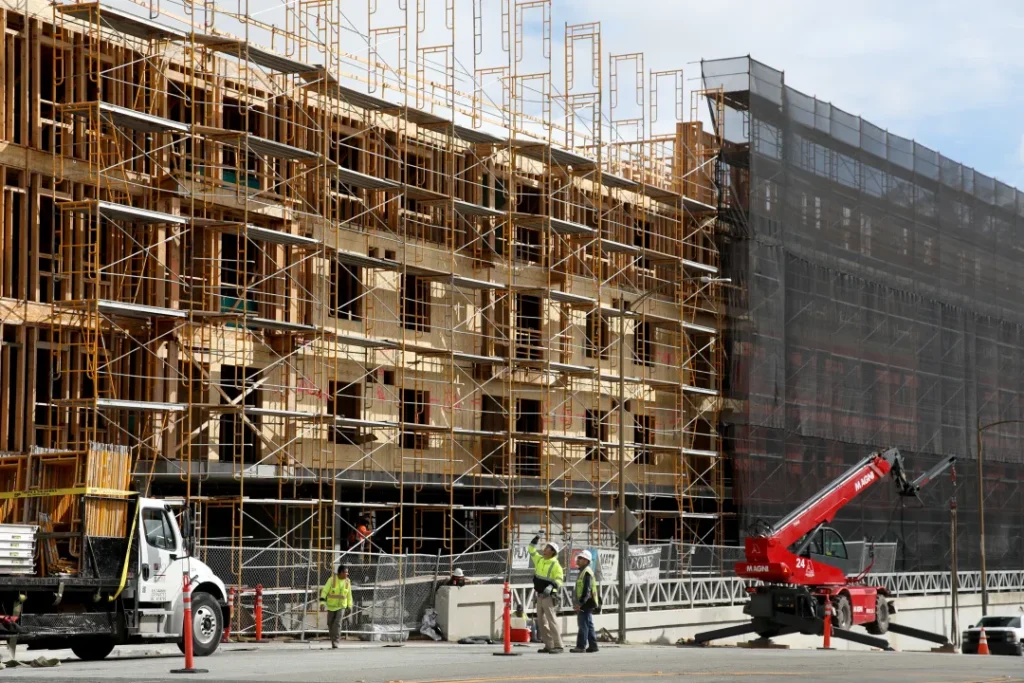One year late and three drafts in, San Jose has finally earned state regulators’ approval of its housing plan, a blueprint for how the city plans to add 62,200 homes over the next decade. SV@Home supported the state certification of this final version of San Jose’s Housing Element. SV@Home’s Director of Policy, Mathew Reed, spoke on what is to come now that the city’s Housing Element has been certified, “Documents don’t make things happen, they create expectations, commitments, and mandates that give us tools and commit us to actions… It will take ongoing work to implement the plans in the housing element.”
By Kate Talerico | Bay Area News Group | January 30, 2024, 4:12 am | Photo: Bay Area News Group
One year late and three drafts in, San Jose has finally earned state regulators’ approval of its housing plan, a blueprint for how the city plans to add 62,200 homes over the next decade.
The state’s certification brings an end to the threat of penalties San Jose faced from falling out of compliance — including the “builder’s remedy” provision that allowed developers to ignore local zoning codes if they proposed low- or middle-income housing. The city is also eligible once more for millions in state grants for affordable housing and transit.
“We’re going to go party hard because this is a huge milestone,” said San Jose Deputy Planning Director Michael Brilliot. “It’s never been this challenging.”
Every eight years, the state requires cities to submit their “housing element” as part of the 1982 Housing Accountability Act, which intended to promote housing production in a state where local control has traditionally hamstrung development and exacerbated affordability problems.
This is the first time that most cities have revised their housing element since the legislature strengthened that law in 2017, demanding greater detail from cities about how they plan to accommodate new housing.
Of the Bay Area’s 109 cities, just 14 met the state’s cutoff for submitting a housing element, after many of them confused the deadline, which was Jan. 31, 2023. San Jose is the last of the three major Bay Area cities to earn the state’s blessings, after the state OK’d San Francisco’s plan in December, and Oakland’s in February.
During the time it was out of compliance, several developers used the “builder’s remedy” in an unexpected way — not to propose taller, denser towers than might otherwise be allowed, but to scale back housing proposals. A third of the 29 builder’s remedy projects submitted to the city amend a previously proposed project to decrease the number of units. The developer of the much-vaunted Berryessa BART Urban Village at the San Jose Flea Market site plans to reduce the project to 940 housing units from the 3,500 previously approved by the city.
Whether these builder’s remedy projects will move forward now that the city is in compliance remains to be seen. Chris Burton, who heads San Jose’s planning department, told this news organization in November that the city would process each of the builder’s-remedy applications “on an individual basis.”
Over the last year, San Jose’s planning department rushed to bring its housing element into compliance. The city went from assigning two staffers to work on the plan part time, to bringing six people to work on it full time.
The city submitted its first proposal to the state in June, but pro-housing and tenant activists voiced concerns that the city hadn’t provided enough opportunities for public input, and that it hadn’t identified enough sites around the city where new housing could be built.
The state rejected that plan, urging San Jose officials in a letter to “engage the community, including organizations that represent lower-income and special needs households.”
San Jose re-submitted its plan Nov. 29, fleshing out some of the 150 action items it hopes to implement over the next eight years. Among them are proposed ordinances that would further streamline permitting timelines for developers, reduce displacement for vulnerable communities and allow small multifamily units across most city neighborhoods.
“We got the policies and programs in a really great place to accelerate our housing goals,” said Ali Sapirman, a South Bay organizer for the Housing Action Coalition.
For now, though, those policies are still just a document and won’t become law unless the city council passes them.
“Documents don’t make things happen,” said Mathew Reed, policy director of the pro-housing SV@Home. “They create expectations, commitments and mandates that give us tools and commit us to actions… It will take ongoing work to implement the plans in the housing element.”
Some of that work is already underway. Last week, San Jose’s City Council approved major changes to its zoning map, clearing the path for denser neighborhoods around the city.
“We’re glad to receive HCD’s stamp of approval on the Housing Element our Council adopted last June, confirming that we are in substantial compliance with state law,” said San Jose Mayor Matt Mahan in a statement. “Our community is in desperate need of housing at all affordability levels — we need to grow smart, fast, and near transit.”
Staff writer Ethan Varian contributed reporting.

